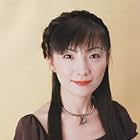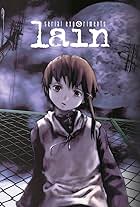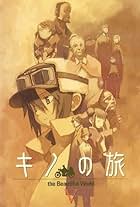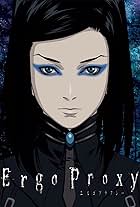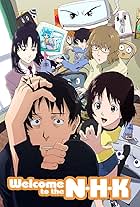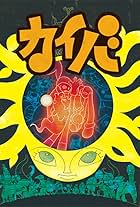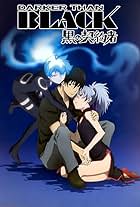IMDb RATING
8.0/10
4.3K
YOUR RATING
A young girl is reborn as an angel-like creature called a haibane, with no memory of who she once was.A young girl is reborn as an angel-like creature called a haibane, with no memory of who she once was.A young girl is reborn as an angel-like creature called a haibane, with no memory of who she once was.
Browse episodes
Storyline
Did you know
- TriviaThe series is based on a six-volume doujinshi series by Yoshitoshi Abe which was never officially published.
- Quotes
Kuu: Inside my mind, there's a beautiful cup. A very beautiful, clear cup. And tiny drops kept falling into it, 'drip, drip, drip', slowly but steadily, everyday. And today, I felt the cup had finally become completely full.
Rakka: Kuu...
Kuu: And that's because you gave me some of those drops. Rakka, thank you.
- ConnectionsFeatured in AMV Hell 3: The Motion Picture (2005)
Featured review
The best-kept secret in the world of Japanese animation is Tomokazu Tokoro's Haibane Renmei, a thought provoking and very moving 13-part 2002 TV series that is part fantasy, part coming-of-age story, and part religious allegory. Haibane is a creation of Yoshitoshi ABe who designed the characters for Serial Experiments Lain and inspired the science fiction series NieA_7. The story is very simple, yet it is full of understated poetry and rich meaning that can be enjoyed by people of all ages (but may be too dark for children under the age of ten).
The story is inspired by Haruki Murakami's novel Hard-Boiled Wonderland and the End of the World in which a man suddenly appears without memory of a previous life in a strange village surrounded by a high wall and ends up working in the library, replacing another who simply disappears. Set in a village called Glie, angel-like people with wings and halos called Haibane or "charcoal feathers" live alongside humans in the town, also surrounded by impenetrable walls. The laws are made by a council called the Haibane Renmie who decreed that the Haibane cannot own anything new, cannot go outside the wall and are forbidden to even touch it. Only the Toga, mysterious masked men who provide for and protect the Haibane, can leave the town.
The Haibane live in an abandoned building called Old Home and have no memory of a previous life, only a vague recollection of a dream they had inside the cocoon in which they were hatched fully-grown. Others live in the Waste Factory and are said to be "rowdy". Every so often, without warning, one of the Haibane disappears beyond the wall to an uncertain destination. This is the "day of flight" that is the fate of all Haibane except those that are "sin-bound" and must remain in darkness. As the series begins, a girl dreams of falling and, when she emerges from her giant cocoon, is named "Rakka" for falling. The early episodes deal with Rakka's arrival and adjustment to life as a Haibane.
Rakka's best friend is Reki who takes care of the younger children and is very protective of Rakka, caring for her when her wings emerge. Reki's name means "stones" because in her dream she was walking on a path of stones. Rakka goes with each of the Haibane to their jobs to see where she would best fit in. Other characters include Nemu who works at the library, Kuu, a boyish-looking girl who is the youngest of the group, Kana, also a tomboy, and Hikari who works at a bakery. Halfway through the series, Rakka must deal with an unexpected loss of a member of the group who has taken flight. Rakka's wings begin to turn black and both she and Reki are haunted by incomplete memories of their cocoon dreams and recollections of committing harm to others.
As the plot slowly unravels, both Reki and Rakka must overcome their feelings of inadequacy before they can move on and the atmosphere often becomes heavy and foreboding. Timeless questions are raised and left for us to ponder, yet the story has the simplicity of a children's book with a sense of mystery and awe about our place in the universe. Is this an allegory of our own after-life or is it about our waking life where no one knows for certain where they have come from and where they are going? Although the story line about sin and salvation strike a more conventional note, to the credit of the authors, they have emphasized personal responsibility and the need for us to take charge of our own lives. Haibane Renmie has just the right combination of magic and realism, and the visuals are beautiful to experience. With a lovely musical score, characters you can identify with, and a story that builds to a moving conclusion, Haibane Renmie is the best animated film I have seen.
The story is inspired by Haruki Murakami's novel Hard-Boiled Wonderland and the End of the World in which a man suddenly appears without memory of a previous life in a strange village surrounded by a high wall and ends up working in the library, replacing another who simply disappears. Set in a village called Glie, angel-like people with wings and halos called Haibane or "charcoal feathers" live alongside humans in the town, also surrounded by impenetrable walls. The laws are made by a council called the Haibane Renmie who decreed that the Haibane cannot own anything new, cannot go outside the wall and are forbidden to even touch it. Only the Toga, mysterious masked men who provide for and protect the Haibane, can leave the town.
The Haibane live in an abandoned building called Old Home and have no memory of a previous life, only a vague recollection of a dream they had inside the cocoon in which they were hatched fully-grown. Others live in the Waste Factory and are said to be "rowdy". Every so often, without warning, one of the Haibane disappears beyond the wall to an uncertain destination. This is the "day of flight" that is the fate of all Haibane except those that are "sin-bound" and must remain in darkness. As the series begins, a girl dreams of falling and, when she emerges from her giant cocoon, is named "Rakka" for falling. The early episodes deal with Rakka's arrival and adjustment to life as a Haibane.
Rakka's best friend is Reki who takes care of the younger children and is very protective of Rakka, caring for her when her wings emerge. Reki's name means "stones" because in her dream she was walking on a path of stones. Rakka goes with each of the Haibane to their jobs to see where she would best fit in. Other characters include Nemu who works at the library, Kuu, a boyish-looking girl who is the youngest of the group, Kana, also a tomboy, and Hikari who works at a bakery. Halfway through the series, Rakka must deal with an unexpected loss of a member of the group who has taken flight. Rakka's wings begin to turn black and both she and Reki are haunted by incomplete memories of their cocoon dreams and recollections of committing harm to others.
As the plot slowly unravels, both Reki and Rakka must overcome their feelings of inadequacy before they can move on and the atmosphere often becomes heavy and foreboding. Timeless questions are raised and left for us to ponder, yet the story has the simplicity of a children's book with a sense of mystery and awe about our place in the universe. Is this an allegory of our own after-life or is it about our waking life where no one knows for certain where they have come from and where they are going? Although the story line about sin and salvation strike a more conventional note, to the credit of the authors, they have emphasized personal responsibility and the need for us to take charge of our own lives. Haibane Renmie has just the right combination of magic and realism, and the visuals are beautiful to experience. With a lovely musical score, characters you can identify with, and a story that builds to a moving conclusion, Haibane Renmie is the best animated film I have seen.
- howard.schumann
- May 29, 2005
- Permalink
- How many seasons does Haibane Renmei have?Powered by Alexa
Details
- Release date
- Country of origin
- Official site
- Languages
- Also known as
- La federación de las plumas de carbón
- Production company
- See more company credits at IMDbPro
- Runtime25 minutes
- Color
- Aspect ratio
- 1.78 : 1
Contribute to this page
Suggest an edit or add missing content










